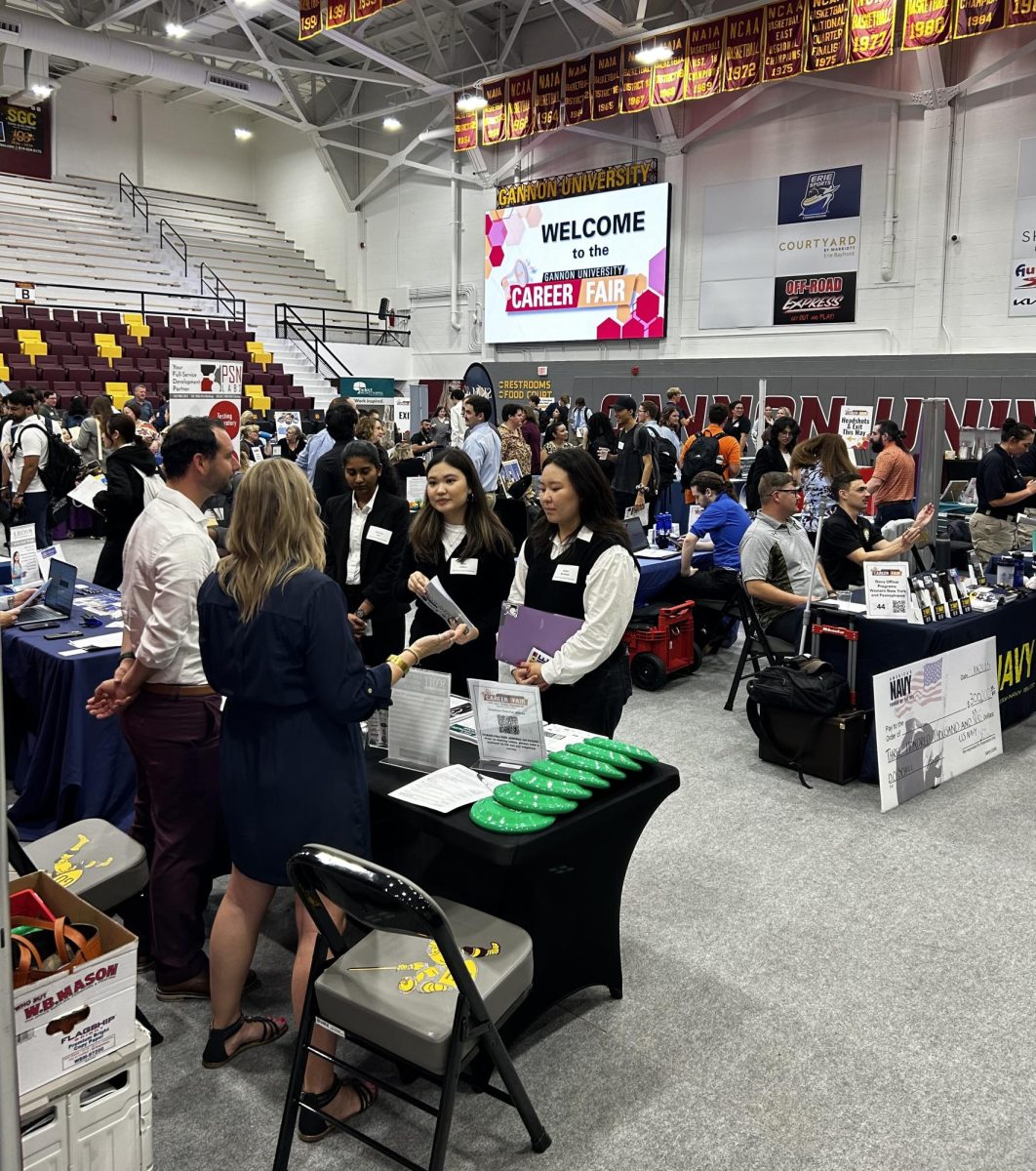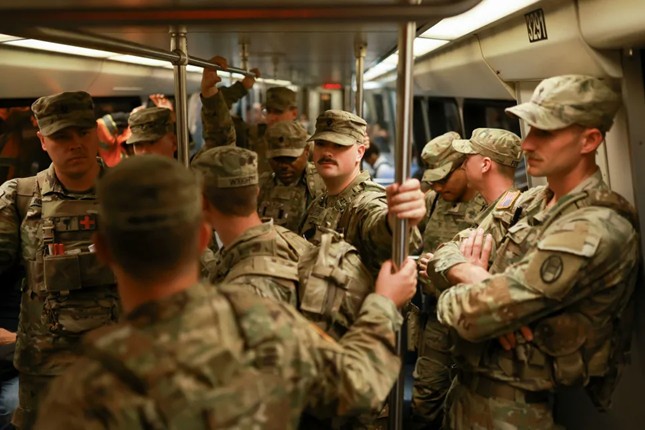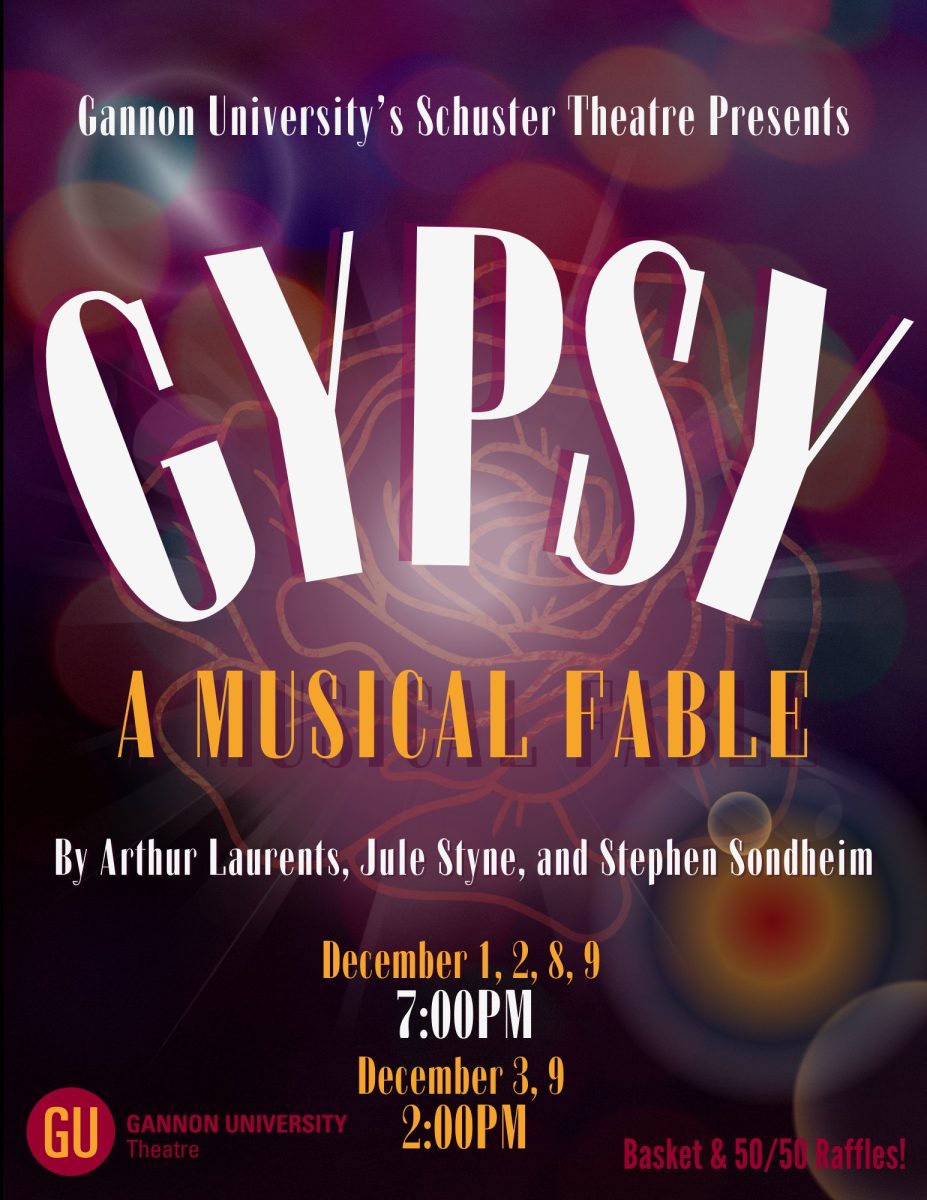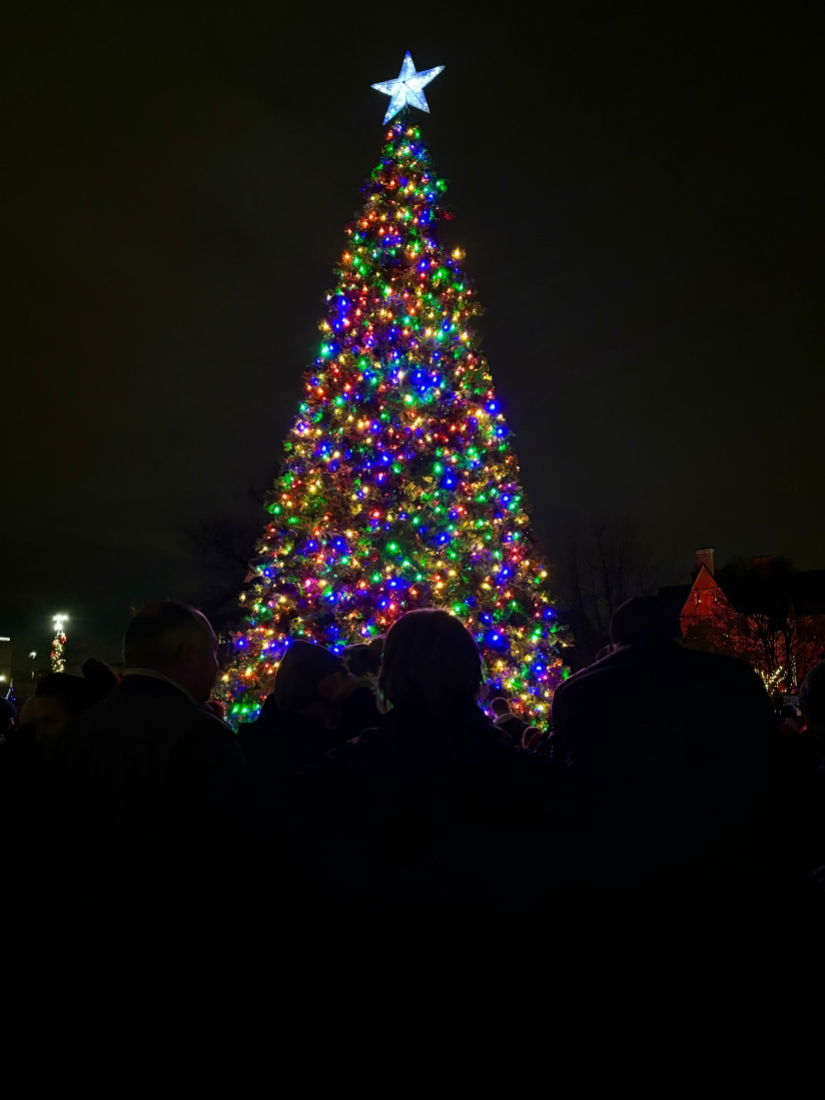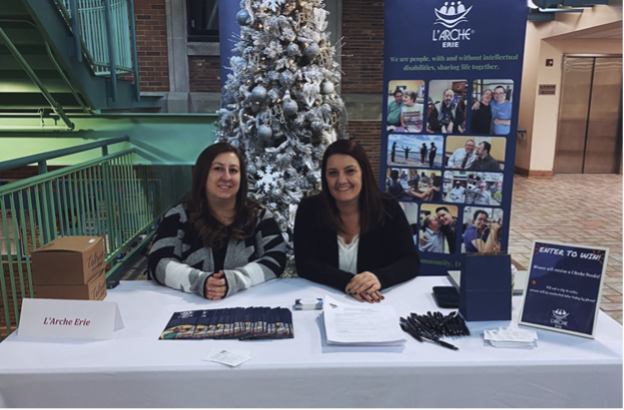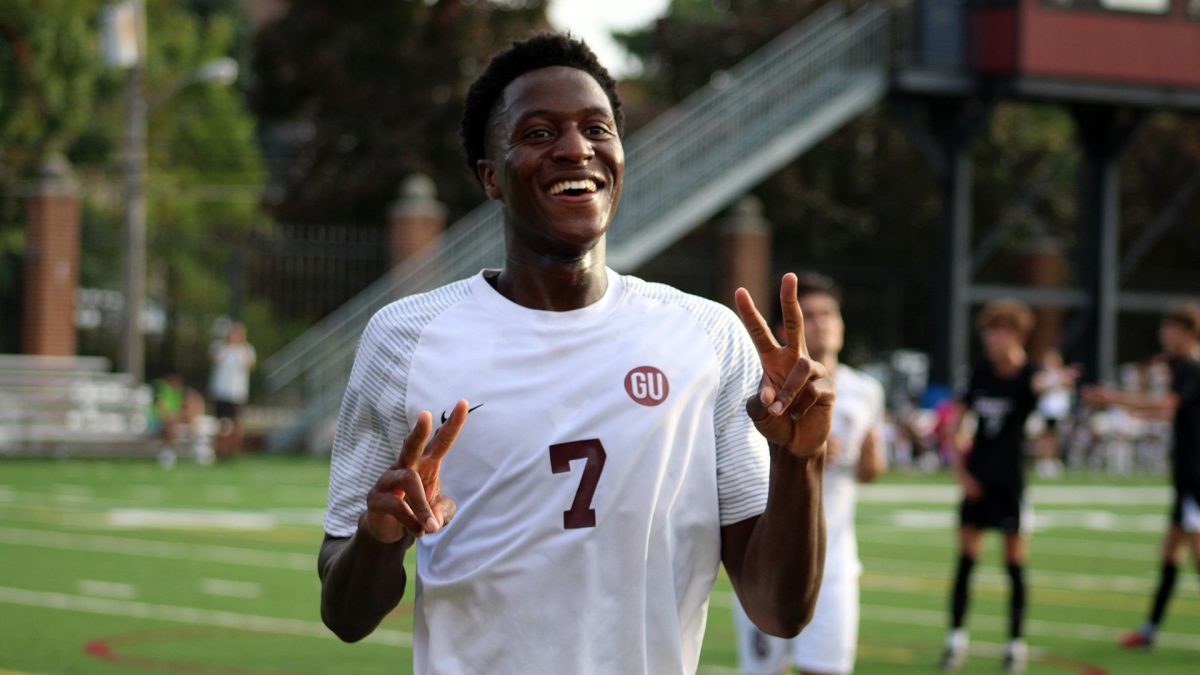Gannon University held the 62nd annual Model United Nations Conference Friday and Saturday for high school students in the tri-state area. The conference was styled to the United Nations General Assembly to give students the chance to discuss and resolve international issues.
Approximately 450 students from 22 high schools filled the Hammermill Center. The conference was held by the department of political, legal and international studies and was run by Gannon faculty and students.
In the history of the conference, there have been approximately 30,000 high school students to participate as delegates, 57 college students to serve as Model UN Secretary Generals and hundreds more to serve as staff members.
The current general moderator, Anjali Sahay, Ph.D., an associate professor and director of international studies, said in some respects, this year’s conference was more successful than last year’s.
“We were very prompt in regards to time,” Sahay said. “Faculty from the high schools complimented us on how we stayed on schedule and still gave students ample time to complete everything.”
Sahay said that not every school was able to come and some dropped out at the last minute, but the staff was quick to find replacements and fill the empty slots with other high schools.
Every year the invitations for the conference are sent to the same 20 to 25 high schools, but the expense of travel has made a difficult roadblock for some of the more distant schools, Sahay said. She said that the goal is to try and entice more local schools to participate in hopes of eliminating extra costs.
Jennifer Amann, secretary general, said from what she saw at the conference, the students who participated were actively engaged in discussing the topics.
“I think they enjoy the challenge of representing a foreign country,” Amann said.
The issues discussed in the Model UN are issues similar to those discussed by the United Nations during its General Assemblies.
This year, the issues were; protecting state sovereignty in the 21st century without the use of armed conflict, encouraging economic growth in emerging and developing markets through sustainable foreign investment, improving human rights standards and protecting the rights of minority groups, preventing international human trafficking and eliminating the global sex trade and eradicating extreme hunger and poverty by promoting sustainable farming techniques and practices.
For the Economic and Social Council (ECOSOC), the issue was promoting and improving universal access to education and professional training in developing nations.
The Historical Security Council discusses issues from the past and tries to come up with a resolution to a problem that has already happened. This year’s issue looked back to 1994 when the Rwanda genocide took place.
Sahay said students need to be familiar with how the world was in 1994 to successfully come to a resolution.
“If students would have had only known what was going on internationally in 1995 it wouldn’t have helped them for this issue,” Sahay said. “It makes the students have to do research and have knowledge on the given year in order to be successful.”
Another interesting council is the Security Council, Sahay said. She said students must be up-to date on the current world issues in order to understand the issues brought up.
“Schools want to send their best students to the Security Council,” Sahay said. “They need to be following along in the current issues and have an understanding of the background of those issues. It is a challenging council, but if students know their stuff it can be very interesting.”
The topics in the Security Council for this year focused on three current world issues. Those issues were Northern Iraqi Kurdish people declaring independence and encouraging other Kurdish people to do so, Boko Haram kidnapping 14 French aid workers and Ukraine invading a pro-Russian Moldovan province.
All of the committees and councils were able to vote and reach a resolution except for ESOSOC. The voting took place at the end of the conference during the final part of the general assembly.
Amann said the Model UN is a way for students to be introduced to major international issues that they might not have been previously aware of.
“It challenges them to represent a country that might have very different foreign and domestic policies than the United States,” Amann said. “I think the Model UN helps students to develop their own worldview.”
Not only is the conference a chance for high school students to grow and gain international perspective, it is also a chance for Gannon students. Sahay said her class, The United Nations Practicum, earns credit and experience by being a part of the Model UN.
There are only 13 students in the class, but they receive great experiential learning, Sahay said. A conference earlier in the semester is also available for students and five were sent this year. She said it gave them a chance to gain some understanding about the Model UN before being a part of it.
Amann said she was very grateful to have had the opportunity of serving as Secretary General. She said she was able to work with a fantastic group of people and for that, she is thankful.
“This organization has such a wonderful history,” Amann said. “I think it’s an amazing opportunity for students to come together to talk about what is going on in the world and how to make it a better place.”
The two-day Model UN is not just for the discussion of international issues, however; it is also a way for students to interact with new people and network with faculty.
Every year there is a mixer that takes place allowing students and faculty the chance to get to know each other and have fun. Sahay said it was a high point to the event and students always have a good time.
Before the mixer, there is also a faculty moderator social where the faculties discusses any new ideas or make suggestions. It was a way to have a discussion face-to-face, Sahay said.
“It was very useful to connect with everyone,” Sahay said. “There were new faculty this year and it was a nice way to establish contact.”
The annual Model UN will take place in the fall of 2015 roughly two weeks before Thanksgiving. Preparations for the next conference will begin soon as the faculty starts to determine the issues that are to be sent out in the spring to the participating high schools.
BECKY HILKER




